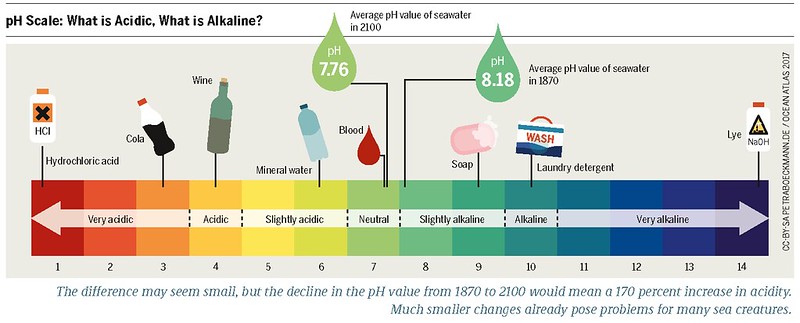The pH of water after adding potassium hydroxide (KOH) is a crucial factor to consider, as it can significantly impact the water’s quality and suitability for various applications. KOH is a strong base that, when added to water, increases the concentration of hydroxide ions (OH-), leading to a rise in the pH level.
Understanding the pH Scale
The pH scale is a measure of the acidity or basicity of a solution, ranging from 0 to 14. A pH value of 7 is considered neutral, while values below 7 are acidic, and values above 7 are basic or alkaline. The addition of KOH to water increases the pH, making the solution more basic.
Calculating the pH of KOH-Treated Water
The pH of water after adding KOH can be calculated using the following formula:
pH = -log[H+]
Where [H+] represents the concentration of hydrogen ions in the solution. Since KOH is a strong base, it dissociates completely in water, and the concentration of hydroxide ions (OH-) is equal to the initial concentration of KOH.
The relationship between pH and pOH (the negative logarithm of the hydroxide ion concentration) is given by the equation:
pH + pOH = 14
Therefore, to calculate the pH of a KOH-treated water solution, you can first find the pOH and then use the above equation to determine the pH.
For example, let’s consider a 0.0067 M KOH solution:
pOH = -log[OH-] = -log(0.0067) = 2.17
pH = 14 – pOH = 14 – 2.17 = 11.83
Similarly, for a 0.033 M KOH solution:
pOH = -log[OH-] = -log(0.033) = 1.48
pH = 14 – pOH = 14 – 1.48 = 12.52
As you can see, the higher the concentration of KOH, the higher the pH of the resulting solution.
Factors to Consider When Adding KOH to Water
When adding KOH to water, it’s essential to consider the following factors:
-
Concentration of KOH: The amount of KOH added directly affects the pH of the water. Adding too much KOH can result in an excessively high pH, which can be harmful to aquatic life and other organisms.
-
Contaminants and Impurities: KOH may contain various contaminants and impurities, such as chlorides, sulfates, and other ions. These substances can affect the water quality and pH level, and should be addressed through appropriate water treatment methods.
-
Water Quality Monitoring: Regular testing and monitoring of the water’s pH and other parameters are crucial to ensure the water remains within safe and acceptable levels for its intended use.
-
Water Treatment Methods: Depending on the water quality and the presence of contaminants, various water treatment methods may be necessary, such as filtration, ion exchange, or reverse osmosis, to maintain the desired pH and water quality.
Practical Applications of KOH-Treated Water
The pH of water after adding KOH has various practical applications, including:
-
pH Adjustment: KOH can be used to increase the pH of water, making it more basic. This can be useful in applications where a higher pH is required, such as in water treatment processes, industrial processes, or aquaculture.
-
Cleaning and Degreasing: KOH-treated water can be used as a cleaning agent, as the high pH helps to break down and remove grease, oil, and other organic matter.
-
Soap and Detergent Production: KOH is a common ingredient in the production of soaps and detergents, where its basic properties are utilized to saponify fats and oils.
-
Neutralization of Acids: KOH can be used to neutralize acidic solutions, making it useful in various industrial and environmental applications.
Conclusion
The pH of water after adding KOH is a crucial factor to consider, as it can significantly impact the water’s quality and suitability for various applications. By understanding the principles of pH calculation and the factors to consider when adding KOH to water, you can ensure that the resulting solution meets the desired pH requirements and is safe for its intended use.
References:
- Acids and Bases – Calculating pH of a Strong Base – ThoughtCo
- What is the pH of a 0.0067 M KOH solution? – Socratic
- What is the pH of a 0.033 M KOH solution? | Wyzant Ask An Expert
- How to Calculate PH and POH when Adding Solid KOH to HCL Solution? – Physics Forums
- Addition of Potassium Hydroxide (KOH) – aqion
- Find the pH of a 0.01M KOH (Potassium hydroxide) Solution – YouTube

